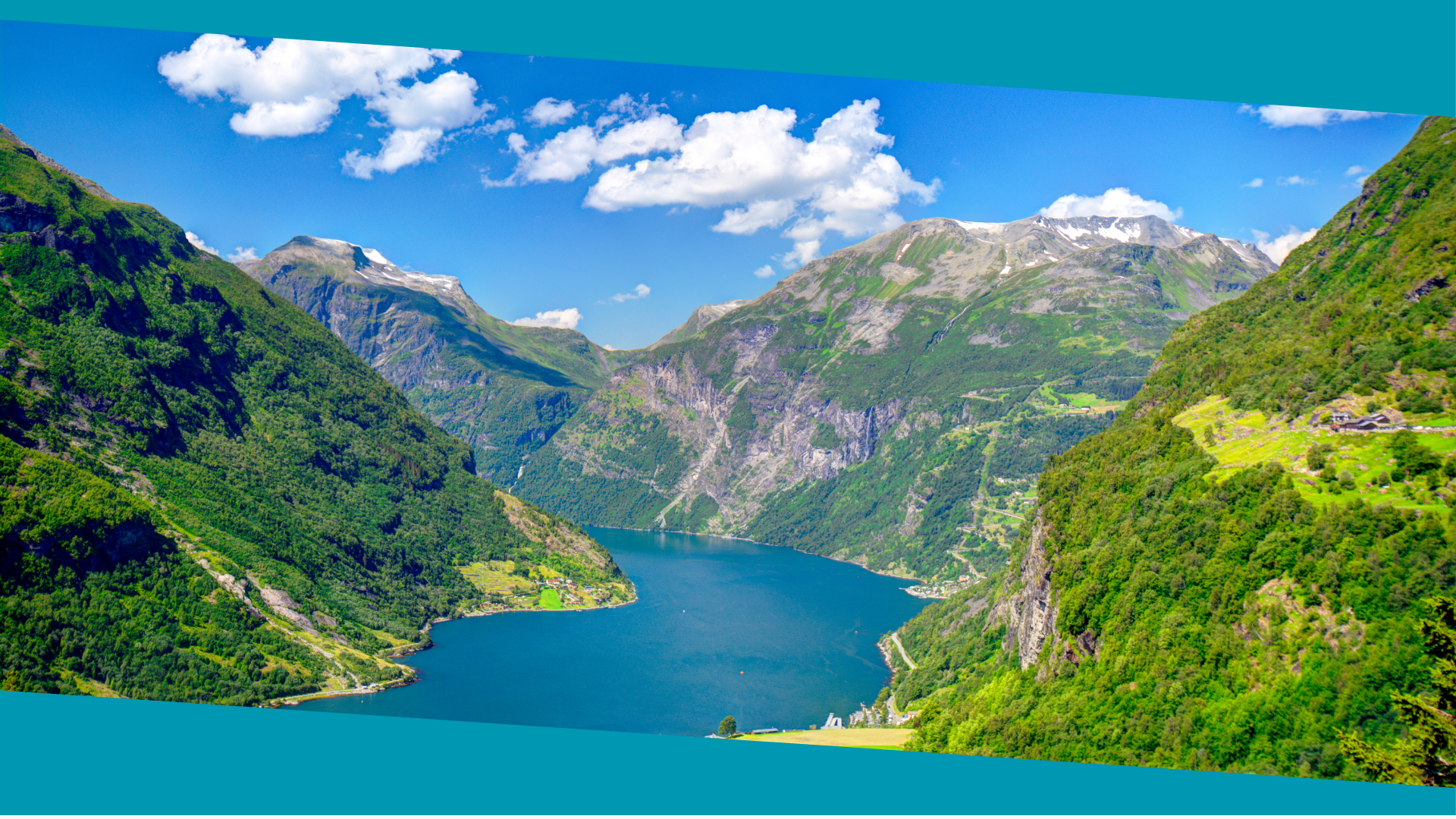

Wonderful Winter Wanderings: Exploring Norway’s Wondrous Wilderness
Norway, with its stunning landscapes and picturesque winter wonderland, is a dream destination for those seeking a unique and unforgettable winter experience. From snow-covered mountains to frozen fjords, Norway offers a wide range of activities and attractions that showcase the beauty of the winter season. Whether you’re chasing the Northern Lights, skiing down pristine slopes, or cozying up in a traditional Norwegian cabin, there is something for everyone to enjoy in Norway’s winter wonderland.
Experiencing Norway’s winter activities is not only about having fun and enjoying the beauty of nature, but it also provides an opportunity to connect with the country’s rich cultural heritage. From traditional cuisine to historic cities, Norway offers a glimpse into its fascinating history and traditions. So, if you’re looking for a winter adventure like no other, pack your warmest clothes and get ready to explore Norway’s winter wonderland.
Table of Contents
ToggleDiscovering Norway’s Winter Wonderland: A Journey Through Snowy Landscapes
Norway’s snowy landscapes are truly breathtaking. From the snow-covered peaks of the Norwegian mountains to the frozen lakes and fjords, the country transforms into a winter wonderland during the colder months. The pristine white snow creates a magical atmosphere that is perfect for outdoor activities and exploration.
Some of the most popular winter destinations in Norway include Tromsø, Lofoten Islands, and Geirangerfjord. Tromsø, located in northern Norway, is known as one of the best places to see the Northern Lights. The Lofoten Islands offer stunning landscapes with towering mountains and picturesque fishing villages. Geirangerfjord, a UNESCO World Heritage site, is famous for its majestic fjords surrounded by snow-capped mountains.
In Norway’s winter wonderland, there are plenty of activities to keep you entertained. You can go skiing or snowboarding in one of the many ski resorts scattered across the country. Cross-country skiing is also a popular activity, allowing you to explore the snowy landscapes at your own pace. Snowshoeing and ice climbing are other options for those seeking a more adventurous experience. And if you’re feeling brave, you can even try your hand at ice fishing or snowmobiling.
Chasing the Northern Lights: Witnessing the Spectacular Aurora Borealis
The Northern Lights, also known as the Aurora Borealis, are a natural phenomenon that occurs in the polar regions. They are caused by the interaction between charged particles from the sun and the Earth’s magnetic field. The result is a mesmerizing display of colorful lights dancing across the night sky.
Norway is one of the best places in the world to see the Northern Lights. The northern part of the country, particularly Tromsø and the Lofoten Islands, offers optimal conditions for viewing this spectacular phenomenon. The best time to see the Northern Lights in Norway is from late September to early April, when the nights are long and dark.
To increase your chances of seeing the Northern Lights, it’s important to choose a location away from light pollution and with clear skies. It’s also recommended to check the weather forecast and solar activity before planning your trip. Patience is key when chasing the Northern Lights, as they can be unpredictable and may require several nights of waiting.
Embracing Hygge: Cozying Up in Norwegian Cabins and Cottages
Hygge is a Danish concept that has gained popularity in recent years. It refers to a feeling of coziness, contentment, and well-being. In Norway, embracing hygge is an essential part of winter living. One of the best ways to experience hygge in Norway is by staying in a traditional cabin or cottage.
Norwegian cabins and cottages, known as “hytter,” are cozy retreats nestled in the heart of nature. They are often made of wood and feature traditional Scandinavian design elements. These cabins provide a warm and inviting atmosphere, with crackling fireplaces, soft blankets, and stunning views of the surrounding landscapes.
While embracing hygge in a Norwegian cabin, there are plenty of activities to keep you occupied. You can curl up with a good book by the fireplace, enjoy a hot cup of cocoa while watching the snowfall, or simply relax and take in the tranquility of nature. If you’re feeling adventurous, you can go for a winter hike or explore the nearby forests on snowshoes.
Skiing in Style: Hitting the Slopes at Norway’s Premier Ski Resorts
Norway is renowned for its world-class ski resorts, offering some of the best skiing and snowboarding experiences in Europe. With its vast mountain ranges and abundant snowfall, Norway provides ideal conditions for winter sports enthusiasts of all levels.
Some of the best ski resorts in Norway include Hemsedal, Trysil, and Geilo. Hemsedal is known as the “Scandinavian Alps” and offers a wide range of slopes for all skill levels. Trysil is one of Norway’s largest ski resorts and features over 70 kilometers of slopes. Geilo is a family-friendly resort with a charming village atmosphere and a variety of activities for both skiers and non-skiers.
If you’re a beginner, don’t worry! Norway’s ski resorts cater to all levels of experience. Many resorts offer ski schools and private lessons to help you get started. It’s important to dress appropriately for skiing, with warm and waterproof clothing, as well as proper equipment such as skis or snowboards, boots, and helmets.
Dogsledding Adventures: Exploring the Wilderness with Man’s Best Friend
Dogsledding is a unique and exhilarating way to explore Norway’s winter wonderland. It involves being pulled by a team of huskies or other sled dogs through snowy landscapes, allowing you to experience the thrill of gliding across the snow while being surrounded by nature.
Some of the best places to go dogsledding in Norway include Tromsø, Kirkenes, and Svalbard. Tromsø, located in northern Norway, offers a variety of dogsledding tours that take you through the stunning Arctic wilderness. Kirkenes, located near the Russian border, provides an opportunity to go dogsledding under the magical Northern Lights. Svalbard, an archipelago in the Arctic Ocean, offers a truly unique dogsledding experience with its polar landscapes and abundant wildlife.
Before embarking on a dogsledding adventure, it’s important to dress warmly and wear appropriate winter gear. You will be provided with all the necessary equipment, including warm clothing and boots. It’s also important to listen to your guide and follow their instructions to ensure a safe and enjoyable experience.
Ice Fishing and Snowmobiling: Exciting Winter Activities for the Adventurous
If you’re looking for more adventurous winter activities, ice fishing and snowmobiling are perfect options. Ice fishing involves drilling a hole in a frozen lake or river and trying to catch fish beneath the ice. Snowmobiling, on the other hand, allows you to explore Norway’s snowy landscapes at high speeds.
Some of the best places to go ice fishing in Norway include Hardangerfjord, Røros, and Alta. Hardangerfjord is known for its abundant fish population, including trout and salmon. Røros, a UNESCO World Heritage site, offers a unique ice fishing experience with its frozen lakes and traditional Norwegian cabins. Alta, located in northern Norway, is famous for its ice fishing competitions and is a popular destination for anglers.
Snowmobiling is another thrilling winter activity that allows you to explore Norway’s winter wonderland at a faster pace. Some of the best places to go snowmobiling in Norway include Svalbard, Lyngen Alps, and Finnmark. Svalbard offers a unique snowmobiling experience with its polar landscapes and wildlife encounters. Lyngen Alps, located in northern Norway, provides stunning views of the fjords and mountains. Finnmark, located in the far north of Norway, offers vast wilderness areas perfect for snowmobiling adventures.
When participating in ice fishing or snowmobiling activities, it’s important to follow safety guidelines and listen to your guides. Dress warmly and wear appropriate winter gear, including helmets for snowmobiling. It’s also important to respect the environment and leave no trace behind.
Savoring Local Cuisine: Indulging in Traditional Norwegian Dishes and Drinks
Norwegian cuisine is known for its simplicity and use of fresh, local ingredients. Traditional Norwegian dishes often feature fish, seafood, game meat, and root vegetables. During the winter months, hearty stews and soups are popular choices to keep warm and nourished.
Some of the most popular Norwegian dishes include lutefisk, rakfisk, and fårikål. Lutefisk is a traditional dish made from dried fish that has been soaked in lye and then cooked. Rakfisk is another traditional dish made from fermented fish, typically trout or char. Fårikål is a lamb stew made with cabbage, potatoes, and spices.
In addition to traditional dishes, Norway is also known for its delicious seafood. Freshly caught fish such as salmon, cod, and herring are staples of Norwegian cuisine. Smoked salmon and pickled herring are popular choices for appetizers or toppings on open-faced sandwiches.
To accompany your meal, try some traditional Norwegian drinks such as aquavit or mulled wine. Aquavit is a distilled spirit flavored with herbs and spices, often enjoyed as a shot or mixed into cocktails. Mulled wine, known as gløgg in Norway, is a warm and spiced wine that is typically served during the winter months.
When visiting Norway, be sure to try some of the local cuisine. There are plenty of restaurants and cafes that offer traditional Norwegian dishes, as well as modern interpretations of classic recipes. Some of the best places to try Norwegian cuisine include Oslo, Bergen, and Stavanger.
Visiting Historic Cities: Discovering Norway’s Rich Cultural Heritage
Norway is home to several historic cities that offer a glimpse into the country’s rich cultural heritage. From medieval architecture to Viking history, these cities are filled with fascinating stories and must-see attractions.
Bergen, located on the southwestern coast of Norway, is known for its colorful wooden houses and historic wharf area, Bryggen. The city’s Hanseatic Museum and Schøtstuene provide insight into Bergen’s trading history. Trondheim, located in central Norway, is home to Nidaros Cathedral, one of the most important pilgrimage sites in Northern Europe. The city also offers a vibrant arts and culture scene.
Oslo, the capital of Norway, is a modern city with a rich history. The Royal Palace and Akershus Fortress are popular attractions that showcase Oslo’s royal heritage. The Viking Ship Museum and the Norwegian Museum of Cultural History provide a deeper understanding of Norway’s Viking past.
When visiting Norway’s historic cities, take the time to explore the charming streets and alleys, visit local museums and galleries, and try some traditional Norwegian food. These cities offer a unique blend of old-world charm and modern amenities, making them perfect destinations for history enthusiasts.
Relaxing in Thermal Springs: Soaking in Natural Hot Springs Amidst Snowy Scenery
Norway is home to several thermal springs that offer a relaxing and rejuvenating experience amidst the snowy scenery. These natural hot springs provide a perfect opportunity to unwind and enjoy the beauty of nature.
Some of the best thermal springs to visit in Norway include the Vulkana Spa in Tromsø, the Svalbard Hot Springs in Svalbard, and the Voss Hot Springs in Voss. The Vulkana Spa is a floating spa located on a converted fishing vessel, offering panoramic views of the Arctic landscape. The Svalbard Hot Springs, located in the remote wilderness of Svalbard, provide a unique experience with their polar surroundings. The Voss Hot Springs, located in western Norway, offer a tranquil retreat with their outdoor pools and stunning mountain views.
When visiting thermal springs, it’s important to follow the rules and guidelines provided by the facility. It’s also recommended to bring your own towel and swimwear. After soaking in the hot springs, take some time to relax and enjoy the peaceful surroundings. It’s a perfect way to unwind after a day of winter activities.
Planning Your Winter Trip: Tips and Tricks for a Memorable Norwegian Adventure
When planning your winter trip to Norway, there are a few things to keep in mind to ensure a memorable and enjoyable experience.
The best time to visit Norway for winter activities is from December to March, when the snow conditions are optimal and the days are longer. However, if you’re interested in seeing the Northern Lights, it’s recommended to visit between late September and early April when the nights are dark.
To get to Norway, you can fly into one of the major airports such as Oslo Gardermoen Airport or Bergen Airport. From there, you can take domestic flights or trains to your desired destination. It’s also possible to travel by ferry or cruise ship if you prefer a more scenic route.
When packing for your trip, be sure to bring warm and waterproof clothing, as well as proper winter gear such as hats, gloves, and boots. Layering is key to staying warm in cold temperatures. It’s also important to pack sunscreen and sunglasses, as the snow can be reflective and cause sunburn.
When planning your itinerary, consider the activities and attractions you’re interested in and allocate enough time for each. It’s also a good idea to check the weather forecast and road conditions before setting out on any outdoor activities.
Norway’s winter wonderland offers a wide range of activities and attractions that showcase the beauty of the winter season. From chasing the Northern Lights to skiing down pristine slopes, there is something for everyone to enjoy in Norway’s snowy landscapes. Whether you’re cozying up in a traditional Norwegian cabin or exploring the wilderness with man’s best friend, Norway provides a unique and unforgettable winter experience.
So, if you’re looking for a winter adventure like no other, pack your warmest clothes and get ready to explore Norway’s winter wonderland. From the stunning landscapes to the rich cultural heritage, Norway has something for everyone to enjoy. Don’t miss out on this opportunity to create lasting memories in one of the most beautiful countries in the world.
If you’re interested in expanding your Norwegian vocabulary, you might want to check out this article on Norwegian words beginning with “W”. It’s a great resource for language enthusiasts looking to deepen their understanding of the Norwegian language. Whether you’re a fitness and gym enthusiast, interested in Chinese characters, shopping and commerce, animals in Norway, or exploring Norwegian food culture, this article has got you covered. So why not give it a read and enhance your language skills? Click here to access the article.

Norwegian A1-A2
Course Overview The Norwegian A1-A2 course is an online program focused on teaching essential Norwegian grammar and vocabulary. It includes a variety of materials and topics, with opportunities to interact with a Norwegian teacher entirely online. Curriculum Highlights The course covers key areas such as grammar and vocabulary and topics such as family, daily life, education, work, traditions, and leisure activities. Who Should Enroll? This course is perfect for beginners or those at the A1 or A2 levels who want to improve their Norwegian skills. What You Get Access to the full Norwegian A1-A2 course. A monthly 1-hour online conversation with a teacher. Many written and oral assignments. Comprehensive information on Norwegian grammar, Norwegian vocabulary and how to use them, important sentence structures, etc. Tips on additional resources to further enhance your Norwegian learning.
0 students enrolled
Last updated Dec 10th, 2024
If you want to learn Norwegian, you can register for classes here. We look forward to hearing from you and helping you become fluent in Norwegian.






